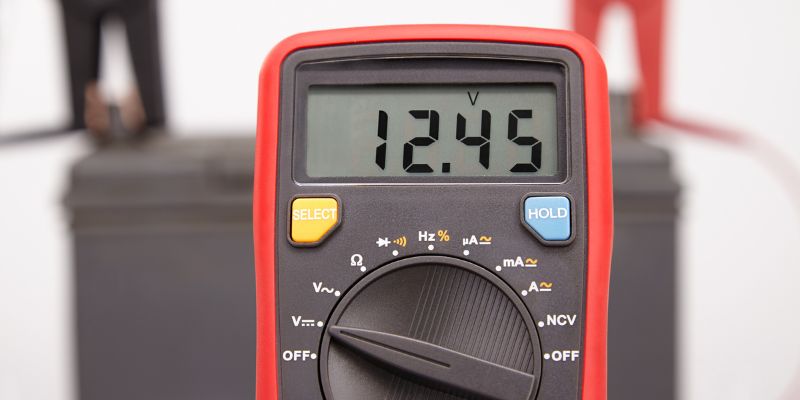Many battery safety articles cover the basics of maintenance. But we’re betting you’re ready for our favorite uncommon tips.
Industrial batteries are the beating heart of material handling equipment, including forklifts, pallet jacks, and scissor lifts.
Battery safety is a cornerstone of any well-managed warehouse or distribution center (DC) – to protect workers from life-threatening situations and optimize processes for safety, efficiency, and employee morale.
In this article, you’ll learn our favorite, less-known battery safety tips, including:
- Which charging methods enhance safety and lower operating costs
- Best-practice “shortcuts” that make using Personal Protective Equipment (PPE) more convenient
- Critical questions to ask when updating your Emergency Response Plan (keep reading for specific recommendations)
- Battery disposal and recycling made easy
- And how to avoid common battery hazards while boosting the lifespan
Tip #1: Master battery charging basics to boost safety and cut costs
Proper charging starts with training. Ensure all operators know how to charge equipment and connect and disconnect charging cables safely.
To help avoid overcharging or undercharging batteries, always use modern charging stations equipped with safety features such as auto-shutoff. This can help prevent hazardous conditions like fires.
Consider establishing a charging protocol/schedule with written or digital sign-off – to ensure no battery is left unattended or overcharged for an extended period.
Finally, talk to your battery supplier or operations team about modern, high-frequency chargers. Because they can prevent overcharging that leads to overheating, high-frequency chargers often boost battery life and improve safety. Since they’re more efficient, they also use less electricity.
Tip #2: Boost PPE compliance – and make it convenient
The correct PPE can save lives – especially when it’s easy to access and clearly labeled. Put PPE near charging stations. And hang posters nearby that show how to use safety equipment during charging, routine operations, and maintenance. Posters with written descriptions in multiple languages often help boost safety and clarity.
Check the manual for your batteries and other equipment, and be sure you have the correct PPE on hand, including:
- Insulated safety gloves (acid-resistant or other as recommended by the manufacturer)
- Safety goggles
- Protective aprons, as needed, should be made from chemical- or acid-resistant materials
- Safety shoes that are closed-toe and acid-resistant protect feet
Of course, the best PPE in the world won’t help if it isn’t used. You can also reduce accidents and hassles by ensuring all maintenance equipment is located next to/in charging stations. And visual checklists or posters can help remind employees how and when to use PPE.
Tip #3: Review your Emergency Response Plan (ERP)
Every facility should have an up-to-date emergency response plan tailored explicitly to battery-related incidents.
Basic steps include immediate shutdown procedures, first aid, and reporting. A robust emergency plan ensures you’ll be prepared and protects your coworkers, facility, and neighbors.
Consider double-checking whether the following elements are part of your ERP:
- Identify all potential risks, including fires, electrical shocks, and chemical leaks.
- Always have Safety Data Sheets (SDS) on hand.
- Create an emergency response team, including people who understand facility layout and operations in depth.
- Gather and post/share emergency contact numbers and relevant employee information – for a faster response time in an emergency.
- Develop straightforward response procedures for isolating problem batteries and using safety equipment.
- Inform your local fire department if you use lithium-ion or lithium batteries. (These batteries are more susceptible to thermal runaway and require a different firefighting protocol with special training and equipment.)
- Ensure adequate ventilation for your battery chemistry.
- Provide proper fire extinguishers, often dry chemical models, within close reach of all battery charging stations and throughout your operation as recommended. Regular training will help ensure employees use them correctly under pressure.
- Map out all electrical disconnects and write out shutdown or de-energizing procedures.
- Conduct periodic training and mock drills so every employee knows what to do during an emergency.
- Regularly test your communication systems, including alarm systems and intercoms.
- Document every step and component of your Emergency Response Plan – and keep copies in easy-to-find locations throughout your facility and on your intranet. Update these regularly, including if and when training programs reveal gaps in your plan.
- Consult with legal advisors and safety experts to confirm your plan aligns with local, state, and federal regulations.
See the National Fire Protection Association’s Battery Energy Storage Systems Emergencies quick reference guide for more information.
Tip #4: Properly recycle/dispose of spent batteries
To protect our environment and drinking water always follow local, state, and federal agencies’ guidelines for battery disposal.
Consider flooded lead-acid (FLA) and absorbent glass mat (AGM) batteries; they’re 99.1% recycled (source: EPA’s “Advancing Sustainable Materials Management: 2018 Fact Sheet”).
And FLA and AGM battery recycling is safe, easy, and available nationwide. Contact your local recycling center or auto mechanic, or visit www.earth911.com or www.recyclerfinder.com.
Tip #5: Prevent common problems with regular inspections
We’ll keep this brief. Routine inspections and maintenance help you spot red flags early when they’re easy to correct. Check for signs of physical damage, battery swelling, and leaks.
And remember: You don’t have to figure this out alone; our battery engineers and installers have studied thousands of industrial installations and documented our best practices…
BONUS TIP: You can download your complimentary "Safety First" Guide for an in-depth, step-by-step breakdown of how to keep batteries operating safely for longer.
And with these tips, you’re set for a safer, more efficient, and more productive workplace.











